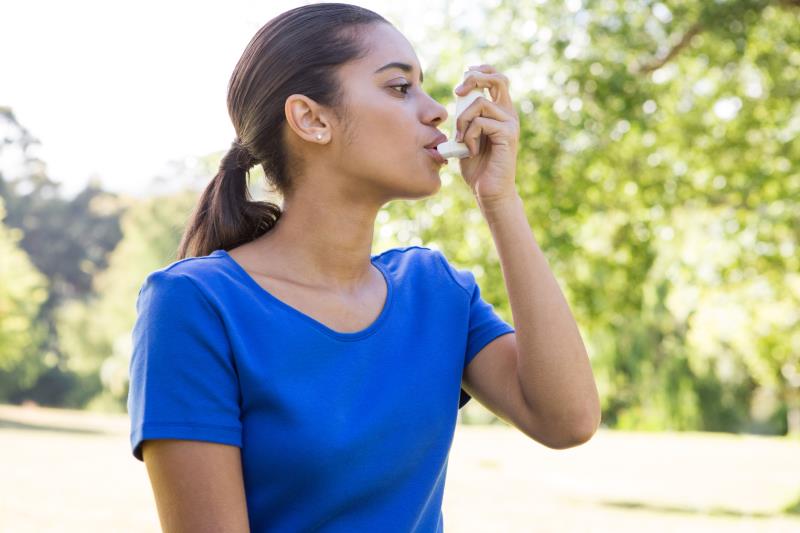Asthma is a lung disease that is usually chronic and can be life-threatening, if not managed properly. With proper management, most people can lead a normal, active life.

During an asthma attack, the air passages in the lungs become narrow or blocked by mucus or a muscle spasm. Asthma attacks can be triggered by allergens such as pollen, animal dander, molds, fungi, chemicals in certain foods, and house dust. Irritants such as tobacco smoke, smog, exhaust fumes, household cleansers, and other chemicals may also cause asthma attacks. Even sudden changes in temperature or humidity, strong winds, and strenuous exercise may trigger attacks.
Seventy percent of all asthmatics suffer, to some degree, from exercise-induced asthma. Exercise can often trigger asthma since you’re breathing rapidly through your mouth. This air reaches the bronchial tubes without being warmed and humidified by passing through the nose. This cold and dry air can trigger asthma.
However, most women who have mild to moderate asthma can participate or excel in sports, if their asthma is properly managed.
Suggestions for making workouts more comfortable for asthmatics are:
- Consult with your physician before beginning an exercise program.
- Perform a 5 to 10 minute warm-up before vigorous exercise.
- Work out slowly for the first 10 – 15 minutes, keeping your heart rate below 140 beats per minute. Activities which require vigorous exercise (heart rate above 170 beats per minute) lasting longer than five minutes without any breaks generally cause an asthmatic to be more prone to an asthma attack. Often an exercise-induced asthma (EIA) attack doesn’t occur during exercise, but within 5 to 10 minutes following exercise.
- Some activities are easier on asthmatics than others. Swimming is usually okay, but distance running really takes its toll. Besides, exercising in a warm, humid environment, such as a heated swimming pool, usually reduces the risk of exercise-induced asthma.

- Take precautions when exercising in cold climates or when pollen levels are high. During cold winter months, limit outdoor exercise, or try breathing through a scarf or mask. (Cold, dry air greatly increases the risk of an exercise-induced asthma episode.). Air pollutants or pollen levels are highest, during rush hours and early morning hours.
- Perform a graduated 10- to 30-minute cool-down after vigorous exercise. This allows the temperature changes in the airways to occur gradually and reduces the risk of exercise-induced asthma.
- Avoid strenuous exercise when suffering from a cold or other respiratory infections.
- Sometimes using an inhaled medication prior to exercise can keep your airways open and allow you to lead a fully active lifestyle.
|
Swimming is probably the best choice for asthmatics or anyone who suffers bronchospasm, for several reasons:
|
A benefit of regular exercise for asthmatics is that it allows them to make a daily assessment of their lung capacity.
When their condition is under control, people with asthma are able to participate in most sports. Those in which activity is intermittent, such as golf, gymnastics and short track-and-field events, are usually less of a problem than those requiring continuous activity, such as football, squash, hockey and long-distance running. Cold weather sports, such as cross-country, skiing and ice hockey, are also more likely to cause bronchospasm. This doesn’t rule out these sports, however. It just means more attention should be paid to proper training and medical treatment.